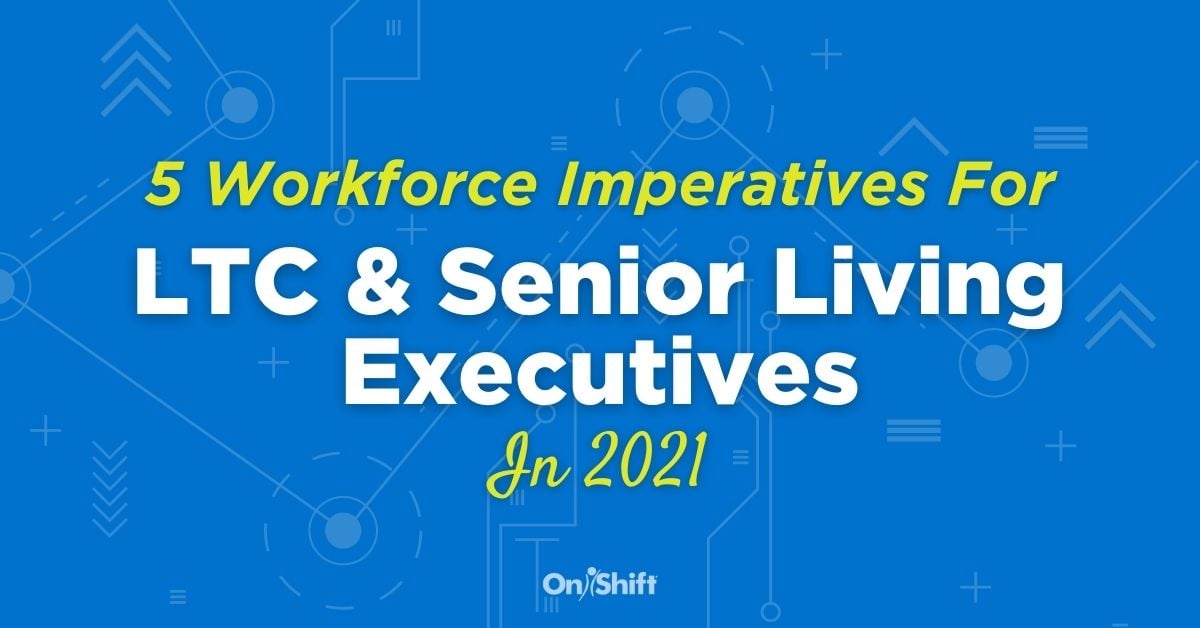March 2, 2021 | Peter Corless
March 2, 2021 | Peter Corless
 Having spent several years working in senior care leadership roles, I know how fast paced the profession can be. It seems like there are new trends and best practices just about every other day. Fortunately, we are a group that is never shy and always eager to share the latest and greatest ideas with one another. Our wheels are always spinning, especially when it comes to solving the profession’s mounting workforce challenges.
Having spent several years working in senior care leadership roles, I know how fast paced the profession can be. It seems like there are new trends and best practices just about every other day. Fortunately, we are a group that is never shy and always eager to share the latest and greatest ideas with one another. Our wheels are always spinning, especially when it comes to solving the profession’s mounting workforce challenges.
In that spirit, I wanted to share what I learned during a recent LeadingAge discussion for corporate partners on their 2021 strategic initiatives. Here are the five key areas of focus.
Pushing The Caregiver Living Wage
A LeadingAge report found that one in eight direct care workers — nursing assistants, personal care aides and home health aides who work in residential care settings and private homes — live in poverty, and more than half received public health benefits in 2018. The same report also shared that almost half of the direct-care workforce earned less than a living wage in 2018, earning, on average, $13.36 per hour last year. Additionally, a sizable majority (84%) lacked retirement benefits through their employers in 2019, and 14% had no health insurance.
We all know that our hardworking frontline workers deserve to make a living wage, but shrinking margins make it nearly impossible for organizations to support this increase in pay. The majority of funding comes from Medicare and Medicaid, that’s why the funds must come from federal and state governments. The challenge, of course, is convincing lawmakers of the need. To aid in their advocacy efforts and those that choose to join in the fight, LeadingAge’s Making Care Work Pay report outlines the many benefits to be realized by implementing the living wage for direct-care workers – not only for the staff, but for residents and local communities.
Expanding On Diversity, Equity & Inclusion Efforts
This is a focus that has been picking up steam recently and will continue to be a high-priority initiative for leadership moving forward. Nearly every virtual event and conference I have attended in the past year has facilitated some sort of discussion dedicated to sharing best practices for creating a more diverse, inclusive workforce – from frontline staff to leadership to boards.
DE&I efforts are especially critical for our industry, since resident populations are diverse and a large portion of our frontline workforce identify as people of color.
Professionalizing The Frontline Care Worker
Providers will also be focusing on rebranding the CNA role - positioning it as a career, rather than an hourly job. This will come with an increased focus on developing more robust career paths and leadership development opportunities. The hope is that these efforts will help organizations attract workers outside the industry and retain their current employees – many of whom place career growth as a top workforce need.
For those committed to being lifelong caregivers, providers will offer these folks lateral growth opportunities and training to expand their skillsets and knowledge over time.
Succession Planning
Offering career ladders can also aid in your succession planning efforts – which will become increasingly important as a large portion of senior care executives are set to retire in the next few years. Organizations will begin looking within their current employee-base for future leaders and grooming those they think fit the bill. This initiative also presents an opportunity for organizations to strategically build a more diverse team of executives.
Recruitment & Retention
To no surprise, executives will continue to work diligently to stabilize their workforce, focusing their efforts on both bringing in new employees and holding onto their current ones. The pandemic has created new challenges in this area, but providers seem optimistic about a return to some semblance of normal in the coming months. If anything, I think the crisis has shown the rest of the world how important this line of work is and hopefully inspired a few folks to join us.
Subscribe to the OnShift Blog
Recent Posts
Categories
About Peter Corless
Peter Corless is Executive Vice President of Enterprise Development for OnShift. Peter is a recognized HR leader in post-acute care and is well-known for his achievements at some of the country’s largest post-acute care organizations, including Kindred Healthcare and Genesis HealthCare. As an experienced, chief administrative and human resources officer within these organizations, he developed strategies that reduced turnover, improved recruiting and hiring strategies, and reduced labor costs.
See for yourself why thousands of providers rely on OnShift’s innovative software for recruitment, hiring, workforce management, pay and engagement. Request your personalized demo today.
